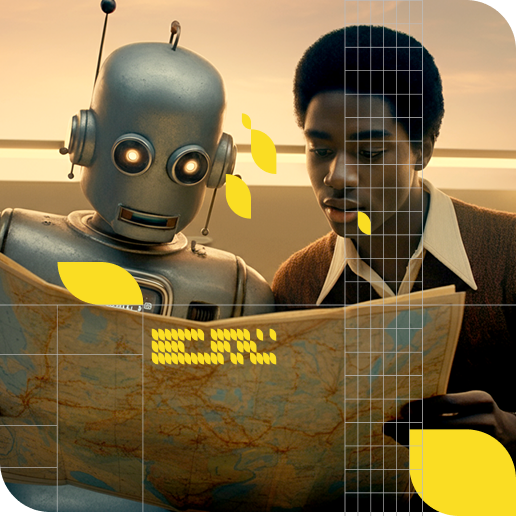
Back in 2000, Blockbuster executives reportedly laughed Netflix out of the boardroom when offered the chance to buy them for $50 million. They couldn’t fathom a world where people would wait days for DVDs by mail instead of walking into a video store.
Fast-forward to today. Netflix is worth over $200 billion, while Blockbuster filed for bankruptcy in 2010.
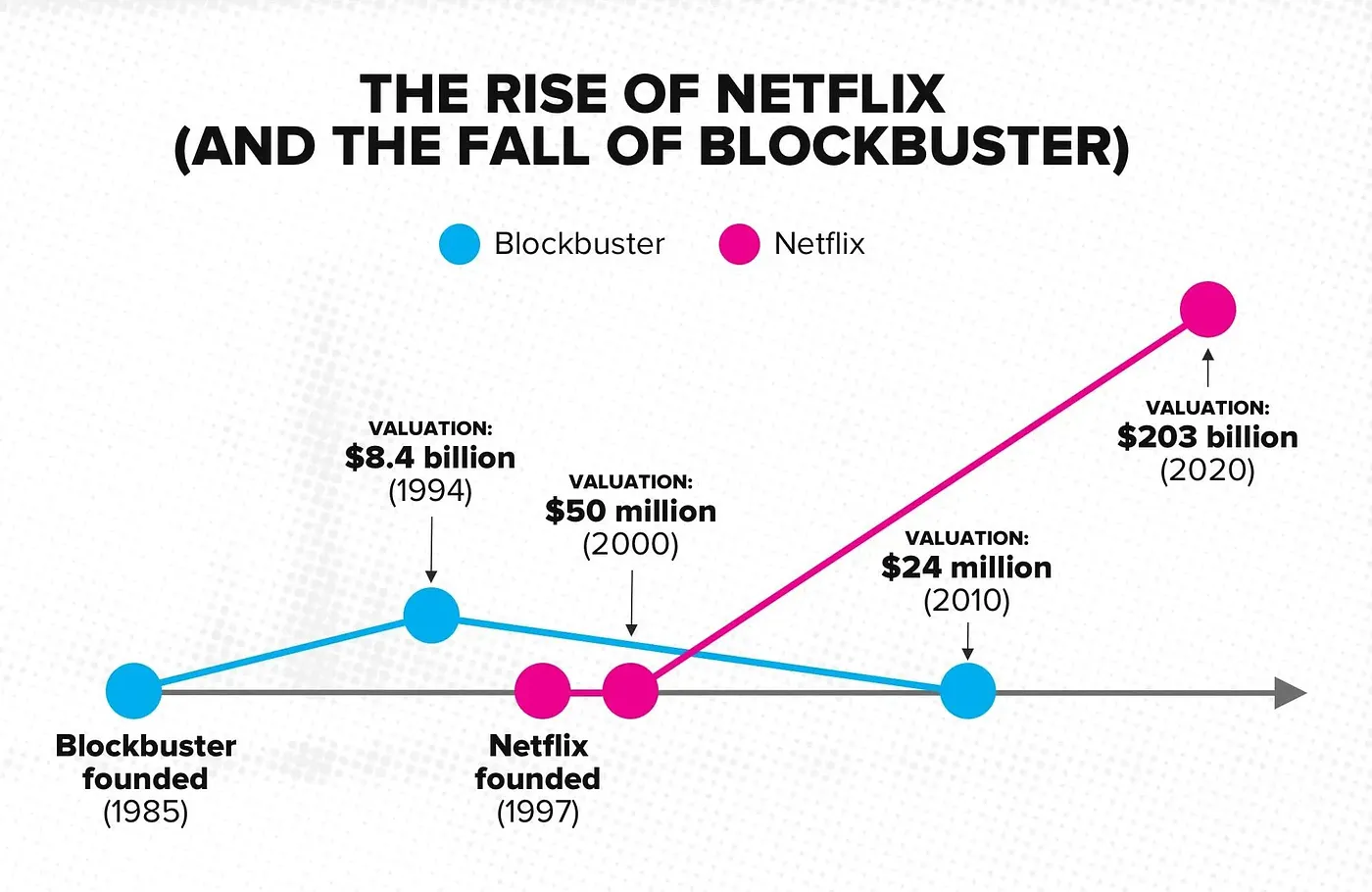
Source: TecWinds by Chan Kulatunga
The point of highlighting this story isn’t just to describe another disruptive tale, but show you how the exact same dismissive thinking is happening right now in marketing departments.
The writing is on the wall: traditional search is fracturing as new platforms emerge and achieve mainstream adoption.
The foundational assumptions that built entire marketing departments are crumbling:
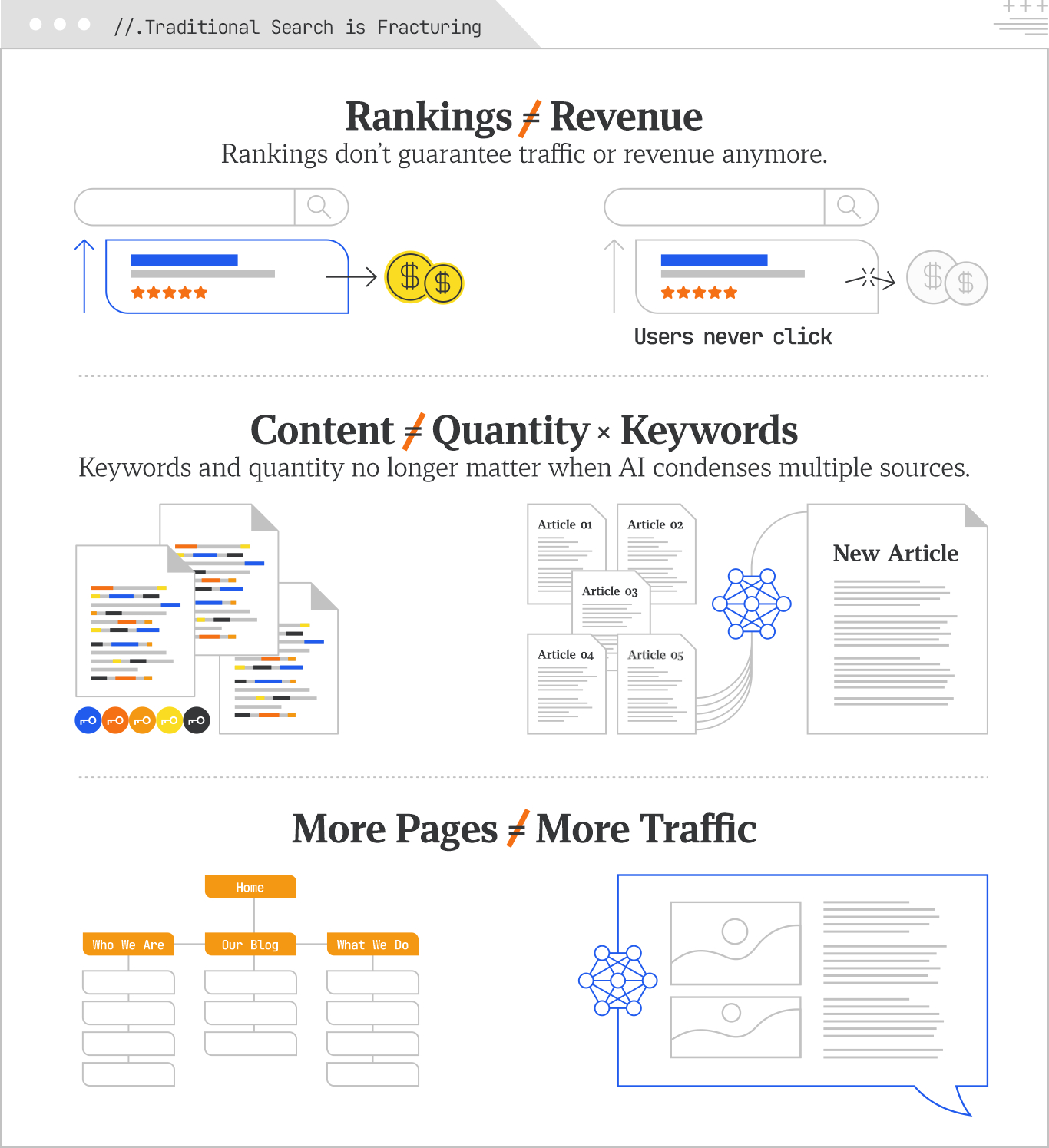
We’re witnessing the end of search as a gateway and the rise of AI-generated answers as the new user interface.
But just like Blockbuster executives dismissed Netflix’s mail-order model, most marketing leaders are treating AI search as a minor feature addition rather than the seismic shift it actually represents.
Sure, Google still holds the lion’s share of overall user activity and search traffic as of Q1 2025, but the landscape beneath our feet is shifting dramatically. Recent industry analysis shows year-over-year growth in clickless queries while clicks to organic results continue declining.
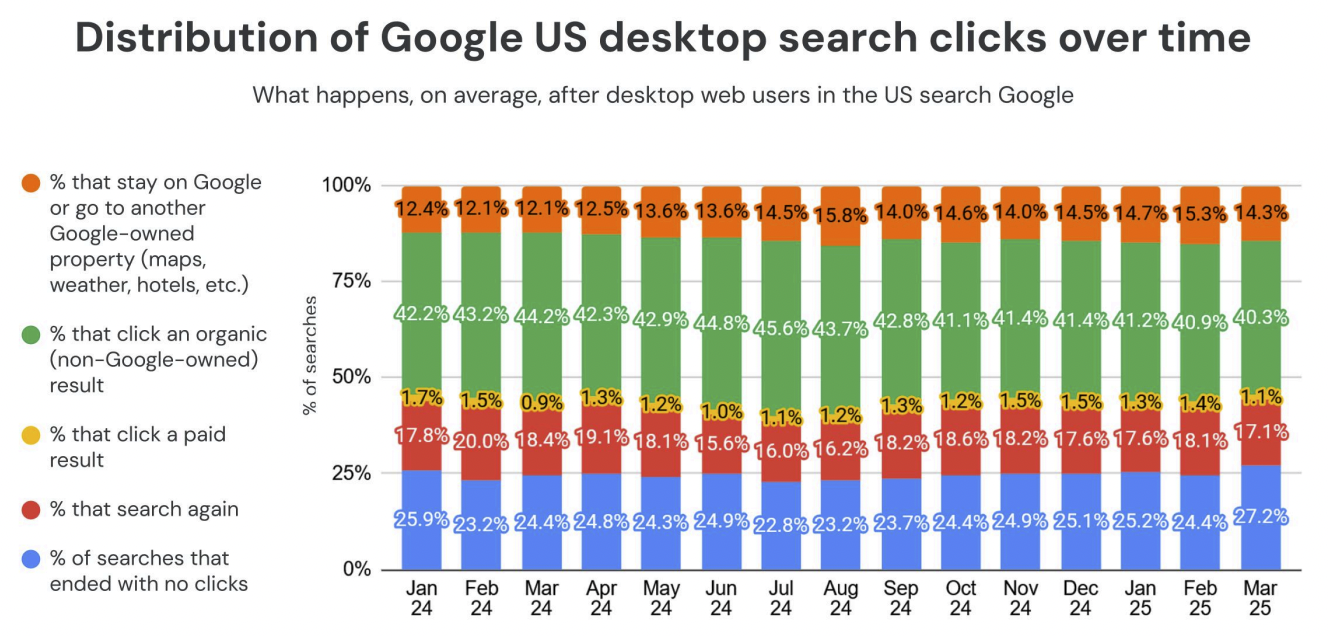
Source: State of Search Q1 2025
Plus, we’re witnessing the emergence of AI Mode, AI Overviews, ChatGPT browsing, Perplexity’s real-time citations, and Claude’s conversational discovery, each changing how content gets found, processed, and cited.
This shift creates a clear divide in how organizations respond. The most successful organizations are already redefining their teams, creating hybrid roles that bridge the gap between traditional SEO and AI-first discovery.
Because here’s where most companies stumble. They’re trying to retrofit old roles for new realities instead of architecting for a search ecosystem that operates on entirely different principles.
The result? A growing disconnect where teams continue optimizing for outdated models, while more agile competitors build for what’s already here.
Industry veteran Duane Forrester doesn’t mince words about the scale of this challenge: “There’s a very defined layer of fear I feel. We have, say, hundreds of thousands of SEOs, but the vast majority (97, 98%) of them are not equipped to deal with the change that’s happening now, and over the next couple of years.”
Here’s another way to look at it. If 97% aren’t equipped for this change, that means a huge opportunity for the 3% who are.
Let’s be crystal clear about something, though. Traditional SEO skills aren’t suddenly worthless. The fundamentals around content quality, user experience, and technical optimization still matter. But they’re now table stakes in a much larger game that includes:
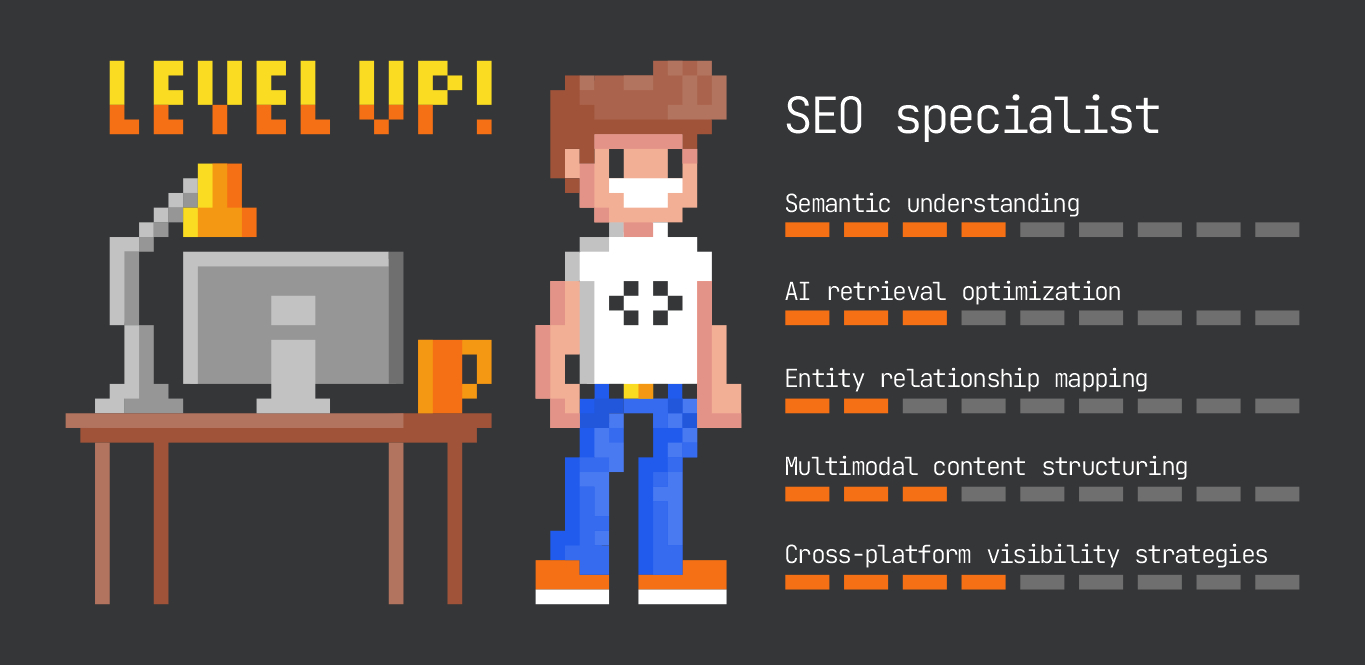
Modern search visibility requires engineering relevant content that can easily show up in every type of search platform. This is where Generative Engine Optimization (GEO) comes in. GEO builds on similar value systems that advanced SEOs, content marketers, and digital PR teams already understand, but the execution requires entirely new skill sets and strategic thinking.
Making this shift (from SEO to GEO) represents more than just adding new tools to existing processes. It requires fundamentally rethinking how teams are structured, what skills matter most, and how success gets measured in an AI-driven search environment.
So what does this fundamental rethinking look like in practice?
Organizations building successful GEO programs are creating new roles specifically designed to lead in generative search. These positions demand skills that didn’t exist a few years ago, blending technical know-how with AI literacy.
The adoption numbers tell the story. According to Stanford’s 2025 AI Index Report, 78% of global organizations are now using AI in production; up from 55% in 2023. This surge in adoption is creating massive hiring demand for new skill sets.
Generative AI skills in job postings have exploded across every category, with some skills seeing over 2,000% growth year-over-year. Prompt engineering roles increased 350%, while retrieval augmented generation positions jumped over 2,000%.
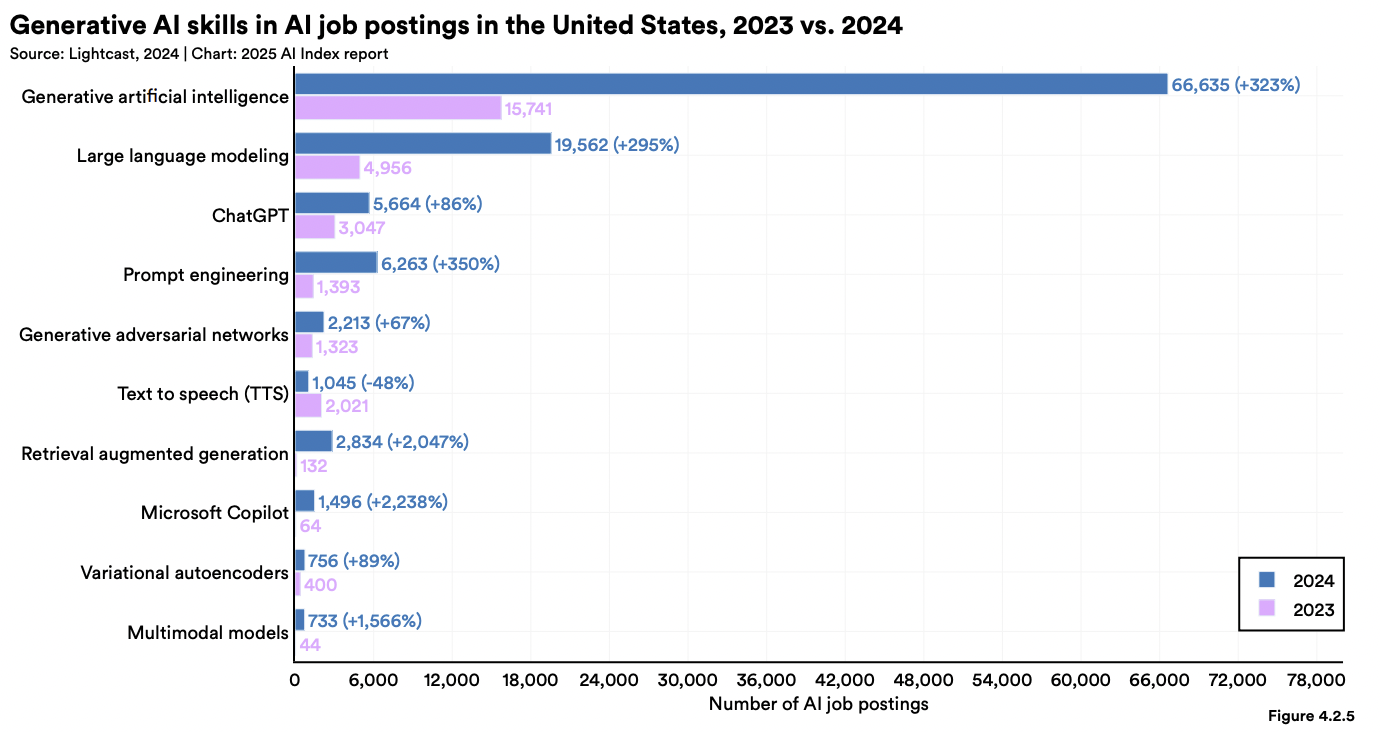
Source: The 2025 AI Index Report
But which specific roles should organizations prioritize?
Based on our work with leading brands, these roles listed below are central to a strong GEO strategy because each focuses on a different part of how AI discovers, interprets, and references content across multiple platforms.
The Relevance Engineer serves as the cornerstone of any GEO-first organization, connecting traditional technical SEO with AI-first content architecture.
When Mike King introduced the term “Relevance Engineering” at SEO Week 2025, he used a simple analogy—optimization is like being a car mechanic who fixes stuff and makes small tweaks to help cars go a bit faster. But what we actually need to be doing is building cars (a.k.a engineering), not fixing them.
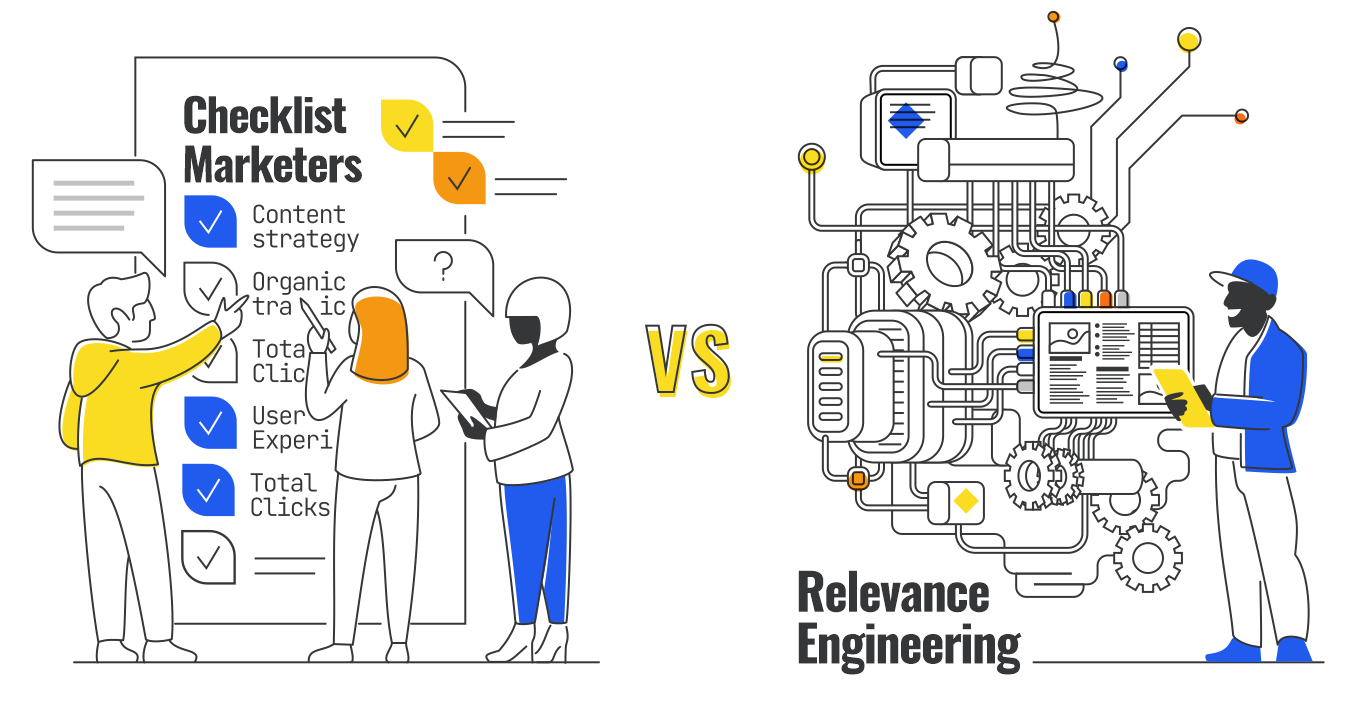
The problem, Mike explained, is that “SEO is a checklist culture” where people mindlessly follow outdated best practices, which is quite wrong. Instead, engineering for relevance requires establishing a series of technical standards rather than relying on anecdotal evidence.
At iPullRank, we define Relevance Engineering (r19g) as the intersection of information retrieval, user experience, artificial intelligence, content strategy, and digital PR to improve visibility across all types of search.

Simply put, the Relevance Engineer builds content systems based on how AI models understand and process information. This means carefully designing content, site structure, and data so that it appears clearly and consistently on every search platform.
But visibility alone isn’t the goal. Relevance is the real metric. A Relevance Engineer’s primary mission is to ensure your brand becomes THE answer, that is, the definitive source that AI systems retrieve, synthesize, and cite first. This differentiates between just being mentioned and being the authority that shapes AI responses entirely.

Mike King explains this properly in his AI Mode piece, where he spoke about engineering for “machine-mediated relevance” rather than traditional rankings. In his words, “SEOs spent the past twenty-five years preparing content to be parsed and presented based on how it ranks for a single query. Now, we’re engineering relevance to penetrate systems of reasoning across an array of queries.”
Core responsibilities of a Relevance Engineer include:
The Relevance Engineer thinks in systems rather than individual pages. When they ‘engineer’ content, they’re building networks of information (across text, video, audio content) that AI can efficiently traverse and understand.
Their work ensures that when AI systems analyze your domain, they encounter a coherent knowledge structure rather than disconnected content pieces, with each piece structured for maximum machine comprehension and citation potential.
Key Skills of a Relevance Engineer:
While the Relevance Engineer builds the foundation, the Retrieval Analyst specializes in understanding how AI systems select, synthesize, and cite information. This role has become critical as brands compete not just for rankings, but for inclusion in AI-generated responses across multiple platforms.
You could have the most perfect-looking content in the world, but if it’s structured in a way that AI systems can’t easily extract and cite, you’re invisible. It’s that straightforward.

Core responsibilities of a Retrieval Analyst include:
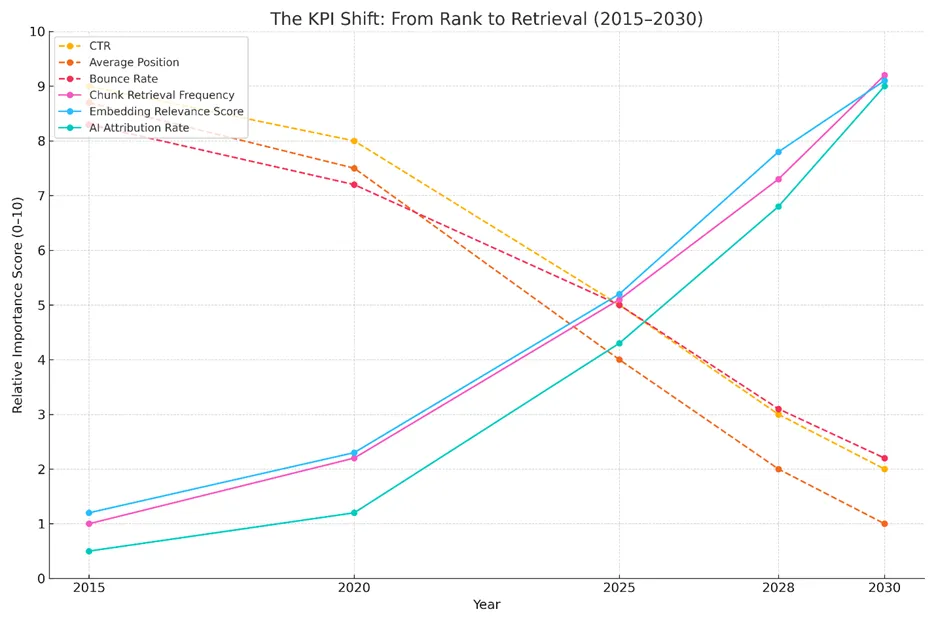
Source: Duane Forrester Decodes – “12 New KPIs for the GenAI Era
Retrieval Analysts conduct controlled experiments to understand AI behavior and then translate the findings into actionable optimization strategies. The insights gained become essential for ensuring prospects discover your brand, regardless of their search behavior.
Key Skills of a Retrieval Analyst:
The AI Strategist leads the overall plan for how a brand shows up across AI-powered search and discovery. They look beyond Google to focus on the entire AI ecosystem. This includes platforms like ChatGPT, Perplexity, and Claude, along with whatever comes next.
They focus on conversational search, multimodal content, and personalized experiences. Their role is to connect the dots between emerging platforms and a unified brand strategy that remains consistent, regardless of where or how users search.

Core responsibilities of an AI Strategist include:
The AI Strategist figures out which AI platforms matter most and helps teams prepare for new search technologies. They translate technical AI stuff into plans that make sense for the business and keep GEO efforts focused on what drives results.
Key Skills of an AI Strategist:
Moving from SEO to GEO means developing entirely new categories of expertise. These are the foundations your team needs to operate in a world where AI decides what gets seen, cited, or ignored.
If you don’t understand how AI reads language, you won’t know how it ranks or retrieves anything. Your team needs to grasp concepts like semantic similarity, entity recognition, and intent classification. This knowledge directly impacts how you structure content for AI consumption.
Search has already moved from matching keywords (lexical) to understanding meaning (semantic). Google initiated this shift over a decade ago with models like Word2Vec, following its Hummingbird update. But most SEO tools are still stuck in that older, keyword-driven mindset.
This creates a significant opportunity gap that GEO teams can leverage. By understanding how AI maps meaning, they can shape content around the semantic relationships that drive visibility across modern search systems.
AI doesn’t “read” in the human sense; instead, it calculates meaning through vector embeddings. These numerical representations allow systems to calculate how closely content matches a query. This process powers everything from semantic search to RAG systems.
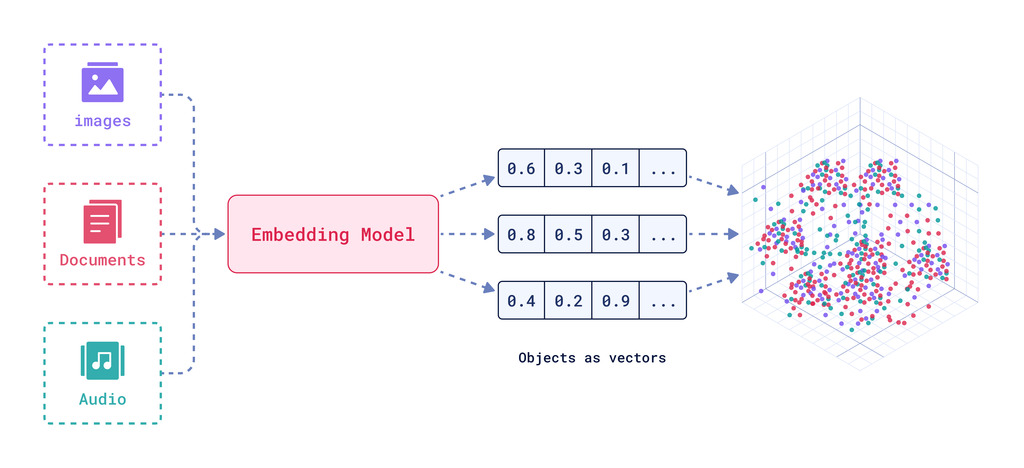
Source: Qdrant
This explains why some content gets chosen even when traditional SEO metrics suggest otherwise. It’s less about keyword density, and more about which content vectors are closest to the query in multi-dimensional space.
To compete in GEO, teams need to understand how embeddings work, how AI systems compute similarity between content and queries, and how to structure content that aligns well in vector space. As Mike King explains in his comprehensive analysis, thinking in vectors is fundamental to modern search optimization.
While not everyone needs to be a programmer, having team members who can analyze large datasets, simulate AI behavior, and automate repetitive tasks provides significant competitive advantages.
Modern GEO often requires building custom tools for passage-level optimization, since existing SEO tools focus on page-level metrics while AI systems process content in chunks. Python enables teams to create these specialized tools and analyze performance at the granular level AI systems actually use.
Teams with these capabilities can test hypotheses about AI behavior, automate content analysis across thousands of pages, and identify patterns that manual analysis would miss.
GEO content strategy adds a new target to the SEO equation: AI synthesis. This is essentially the process by which AI systems integrate information from multiple sources to generate coherent responses.
But this requires understanding how to create content that AI systems can easily parse, synthesize, and cite. It involves structuring information in semantic units, using explicit semantic triples (or subject-predicate-object patterns), and ensuring content maintains coherence when broken into fragments for AI processing.

Some helpful tips here include creating “fraggles” – fragmented passages that AI systems can easily extract and cite. Content must be structured in easily digestible chunks that answer specific questions while maintaining narrative flow for human readers.
When ChatGPT or Perplexity generates a response, they’re pulling chunks from various sources and stitching them together. Your content needs to be designed for this kind of modular assembly.
As AI systems get smarter, knowing how to write good prompts is very important for testing and improving content. This skill helps teams understand how AI systems interpret content and develop content that aligns with common query patterns.
Prompt engineering extends beyond just testing AI responses. It also means learning how different AI tools handle queries, what kind of content structures they prefer, and how to organize information so machines understand it best.
For GEO teams, prompt engineering reveals how AI makes decisions. By trying different prompts, teams can reverse-engineer how AI systems prioritize certain content types, structures, and information hierarchies.
Understanding statistical analysis, A/B testing, and data visualization helps teams to make informed decisions based on measurable results rather than assumptions.
The days of SEO “best practices” based on educated guesses are coming to an end. When you’re competing for visibility in systems that process billions of data points, intuition isn’t enough. You need statistical rigor.
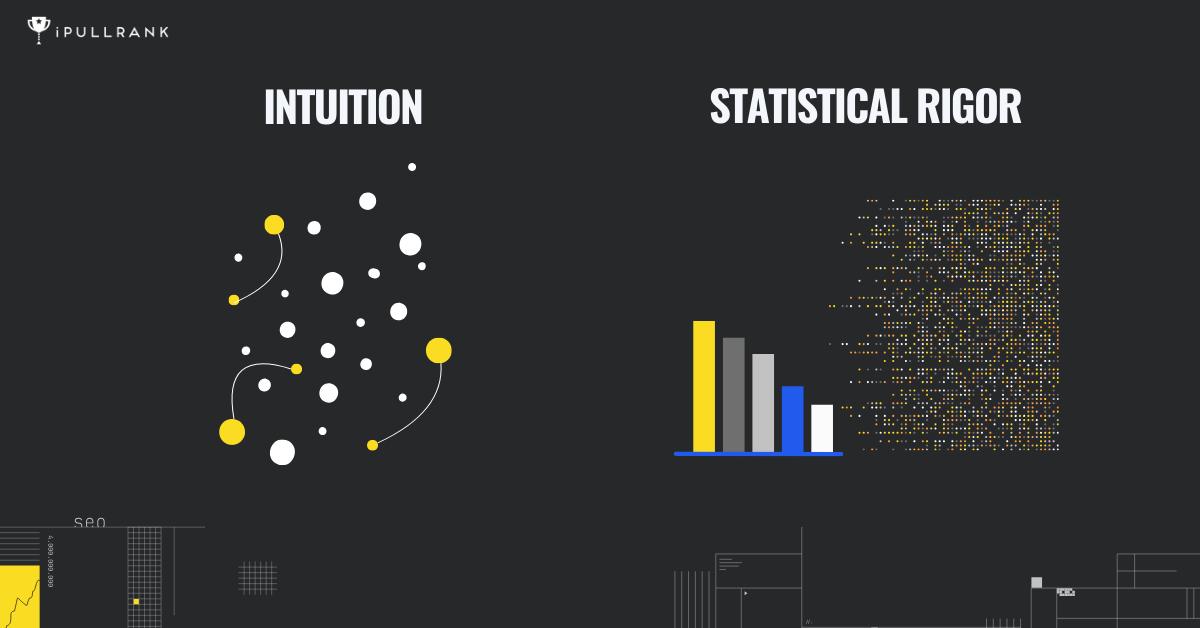
AI systems process millions of data points to identify patterns invisible to manual analysis. Teams with data science skills can analyze these patterns, identify areas for improvement, and assess the effectiveness of GEO strategies across various platforms.
This kind of analysis becomes essential for measuring success in environments where rankings become less relevant.
As AI systems rely more on structured knowledge, knowing how to create and manage knowledge graphs gives teams a big advantage in organizing content and showing how ideas connect.
Knowledge graphs help AI understand the relationships between concepts, entities, and topics in your content. Teams that can structure information using knowledge graph principles create content that AI systems can more easily process and cite.
This skill involves understanding entity relationships, ontologies, and how different AI systems structure information internally. With these insights, teams can organize content to fit how AI expects to see it.
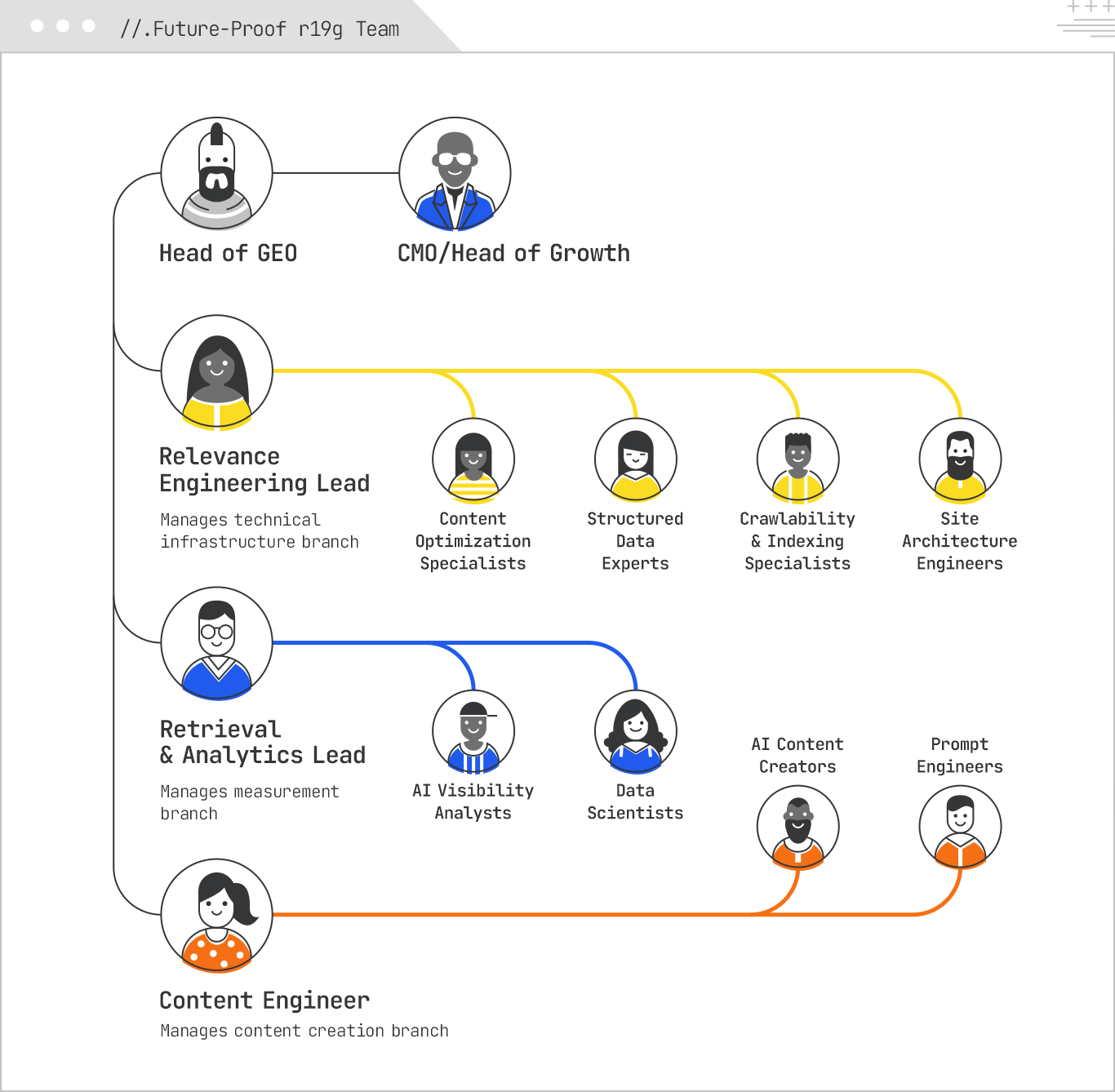
Here’s how forward-thinking organizations are structuring their teams for the generative era:
The strategic leader who owns the entire GEO function, reporting directly to the CMO or Head of Growth. They connect business goals with technical execution, making sure GEO initiatives support the company’s bigger vision.
This person reports to the Head of GEO and manages the technical infrastructure team. They oversee all the technical work that makes content discoverable and citable by AI systems. They also coordinate between different technical specialists to ensure everything works together seamlessly.
These specialists focus on semantic markup, entity optimization, and content structure for AI consumption. They understand how to structure content so AI systems can easily parse and understand it. That also requires working directly with content teams to implement semantic improvements.
These experts implement and maintain schema markup and other structured data formats that help AI systems understand context. They ensure your content speaks the language that AI systems prefer when deciding what to cite.
They ensure AI systems can efficiently discover and process content. While traditional SEO focused on Google’s crawlers, these specialists optimize for multiple AI platforms that each have different crawling and processing requirements.
These engineers design technical infrastructure that supports both human users and AI crawlers. They build the foundation that makes everything else possible, ensuring fast performance and clear information architecture.
This person manages the measurement and optimization team. While the Relevance Engineering Lead builds the technical foundation, this person figures out what’s actually working and why. They turn data into actionable insights.
These analysts track how your brand appears across different AI platforms. They monitor citation rates, brand mentions, and content chunk performance across platforms like ChatGPT, Perplexity, Claude, and AI Overviews.
These data scientists develop predictive models and work with large datasets to conduct advanced analysis of AI system behavior. They also build custom tools for analyzing semantic similarity and embedding distance.
This person builds scalable content systems that blend AI automation with human creativity for maximum impact. They engineer workflows that make ambitious content strategies achievable at scale.
These creators make content specifically optimized for AI understanding and citation. They know how to structure information in semantic units that AI systems prefer, while keeping content engaging for human readers.
These engineers develop and test prompts for various AI systems to ensure consistent brand representation. They understand how different AI platforms respond to different types of queries and can optimize content accordingly.
This organizational structure recognizes that GEO success requires both technical depth and creative strategy. Each team member understands how their work contributes to the broader GEO strategy, and the leadership roles provide the business context needed to prioritize initiatives effectively.
Building a GEO team isn’t just about hiring new people or learning new tools. The biggest shift is cultural—moving from an optimization mindset to an engineering mindset.
Think about how old SEO worked. You’d make small tweaks to meta descriptions, adjust some keywords, maybe build a few links, then hope for the best. That approach doesn’t cut it anymore.
GEO requires building systems that work consistently across multiple AI platforms. Instead of crossing your fingers after making changes, you’re engineering processes that reliably improve your visibility in AI responses.
This means your team needs to get comfortable with experimentation, measurement, and continuous learning. The AI landscape changes fast, so being flexible and data-driven becomes essential. You’re essentially applying an engineering and scientific mindset to marketing challenges.
The organizations that embrace this shift will own the future of visibility. Because in the age of AI, visibility means nothing if you’re not retrieved, and content means nothing if it doesn’t offer real information gain. Don’t be the next Blockbuster, be the next Netflix.
If your brand isn’t being retrieved, synthesized, and cited in AI Overviews, AI Mode, ChatGPT, or Perplexity, you’re missing from the decisions that matter. Relevance Engineering structures content for clarity, optimizes for retrieval, and measures real impact. Content Resonance turns that visibility into lasting connection.
Schedule a call with iPullRank to own the conversations that drive your market.

The appendix includes everything you need to operationalize the ideas in this manual, downloadable tools, reporting templates, and prompt recipes for GEO testing. You’ll also find a glossary that breaks down technical terms and concepts to keep your team aligned. Use this section as your implementation hub.
//.eBook

The AI Search Manual is your operating manual for being seen in the next iteration of Organic Search where answers are generated, not linked.
Prefer to read in chunks? We’ll send the AI Search Manual as an email series—complete with extra commentary, fresh examples, and early access to new tools. Stay sharp and stay ahead, one email at a time.
Sign up for the Rank Report — the weekly iPullRank newsletter. We unpack industry news, updates, and best practices in the world of SEO, content, and generative AI.
iPullRank is a pioneering content marketing and enterprise SEO agency leading the way in Relevance Engineering, Audience-Focused SEO, and Content Strategy. People-first in our approach, we’ve delivered $4B+ in organic search results for our clients.
We’ll break it up and send it straight to your inbox along with all of the great insights, real-world examples, and early access to new tools we’re testing. It’s the easiest way to keep up without blocking off your whole afternoon.
